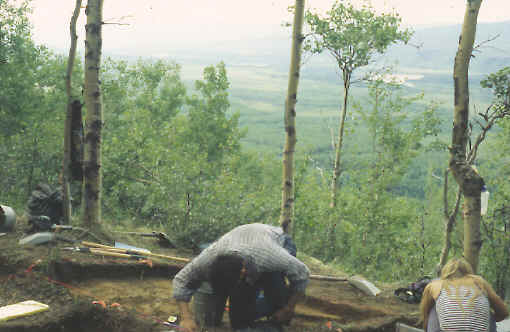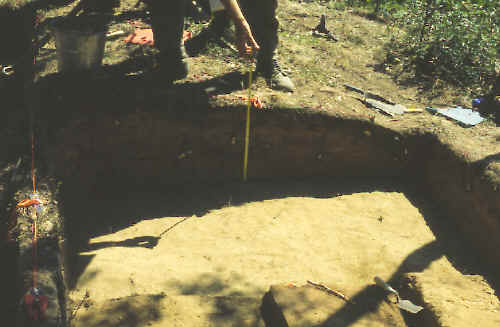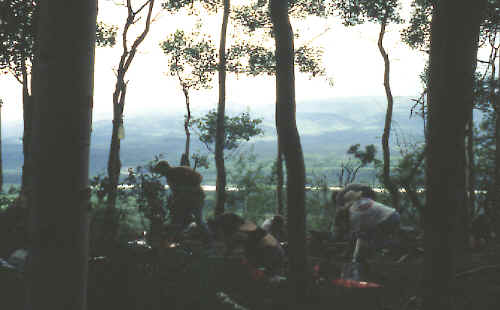|
|
|
The 1996 re-excavation of the Moose Creek site was part of the University of Alaska Fairbanks Summer Session's archaeological field school. The project was headed by Dr. Georges A. Pearson and included Robert A. Beck as crew chief along with 15 students. |
|
|
|
|
One of the goals for the 1996 project was to excavate at least twice as much area as the two previous excavations. This, in theory, would raise the chances of finding more identifiable tool types from specific complexes. Over 45 additional square meters were excavated around the earlier 1979 and 1984 units. This method produced one large comprehensive map that includes both the earlier and more recent finds. |
|
|
|
|
Very detailed excavation methods were used in 1996. The two lowest cultural features were excavated by trowel and sifted through a 1/8 inch screen. The depth of all the artifacts below the sand were measured using three different methods: below surface, below datum and below sand. |
|
| CONTINUE ON TO PAGE 3 | |
|
"REFERENCES"
1991,
"Clovis Origins and Adaptations," "The Nenana Complex of
Alaska and Clovis Origins," by Ted Goebel, Roger Powers and Nancy
Bigelow, pp 49-76. |
|


